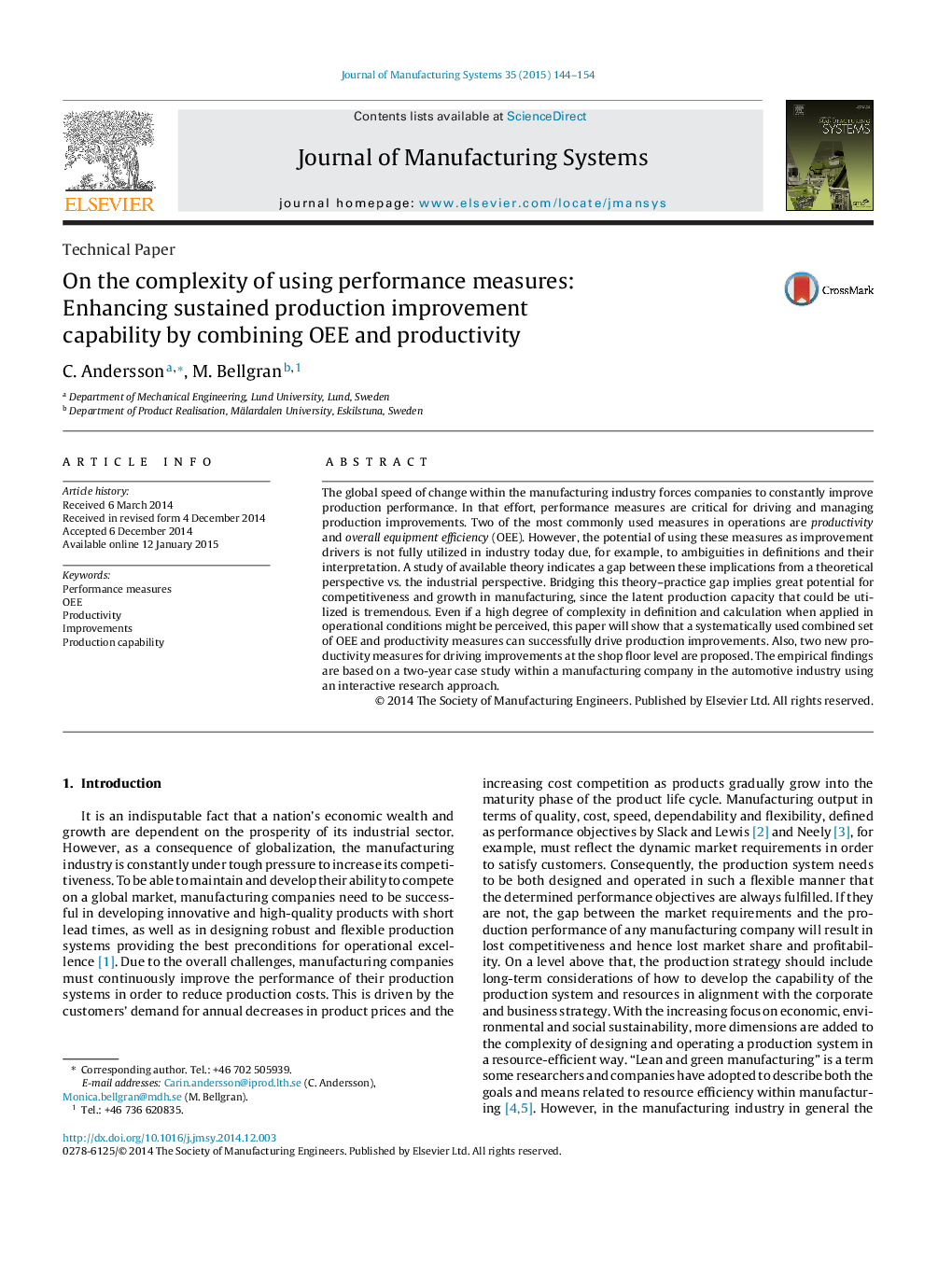| Article ID | Journal | Published Year | Pages | File Type |
|---|---|---|---|---|
| 1697497 | Journal of Manufacturing Systems | 2015 | 11 Pages |
•It is showed that OEE does not work alone as a driver for productivity increase.•Two productivity measures for driving production improvement are proposed.•A method combining OEE and productivity to drive improvement on shop floor level.•Six success factors in industrial improvement work are identified.
The global speed of change within the manufacturing industry forces companies to constantly improve production performance. In that effort, performance measures are critical for driving and managing production improvements. Two of the most commonly used measures in operations are productivity and overall equipment efficiency (OEE). However, the potential of using these measures as improvement drivers is not fully utilized in industry today due, for example, to ambiguities in definitions and their interpretation. A study of available theory indicates a gap between these implications from a theoretical perspective vs. the industrial perspective. Bridging this theory–practice gap implies great potential for competitiveness and growth in manufacturing, since the latent production capacity that could be utilized is tremendous. Even if a high degree of complexity in definition and calculation when applied in operational conditions might be perceived, this paper will show that a systematically used combined set of OEE and productivity measures can successfully drive production improvements. Also, two new productivity measures for driving improvements at the shop floor level are proposed. The empirical findings are based on a two-year case study within a manufacturing company in the automotive industry using an interactive research approach.
